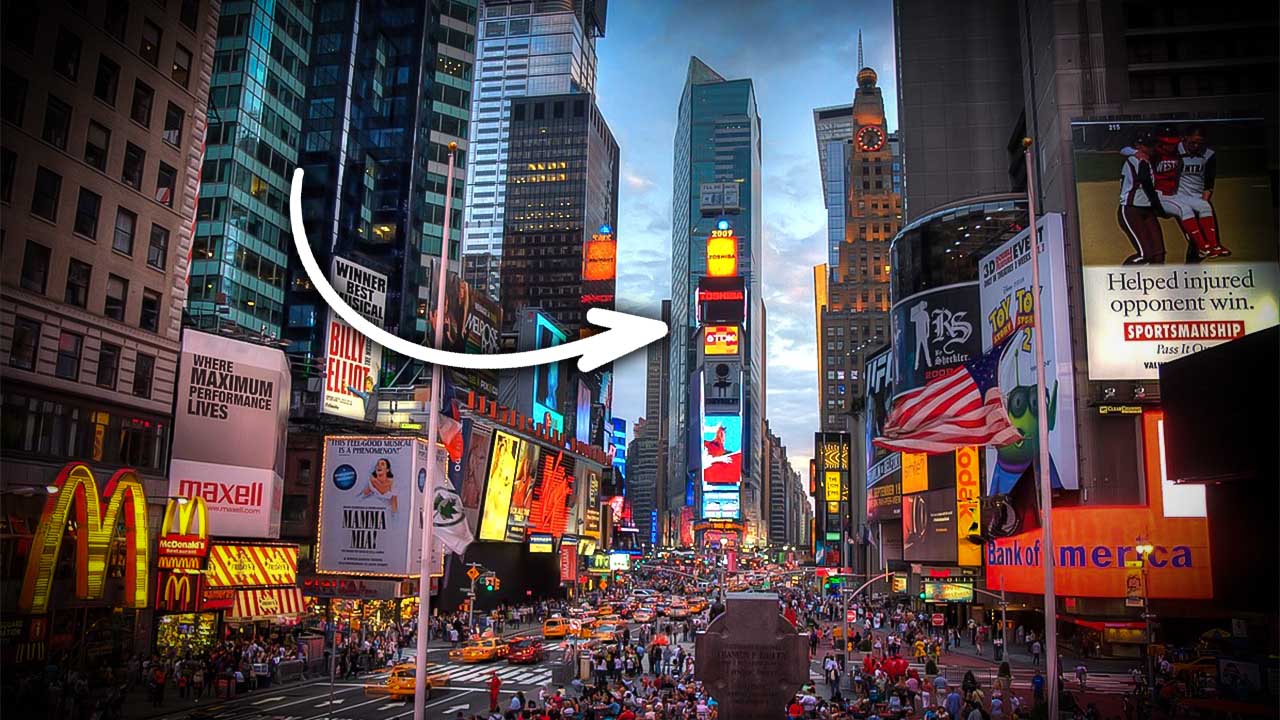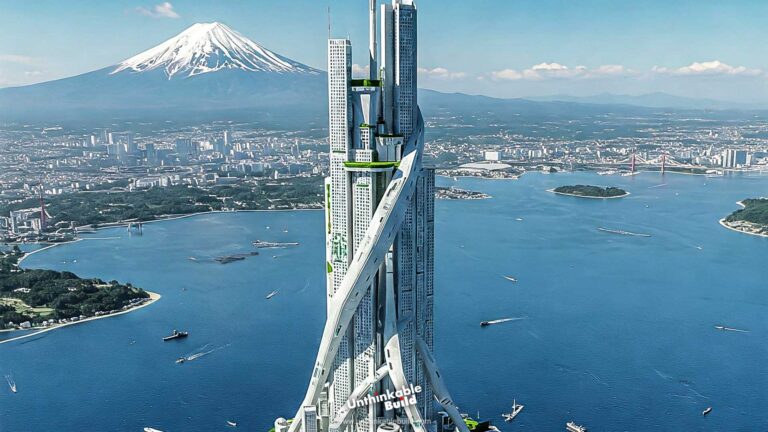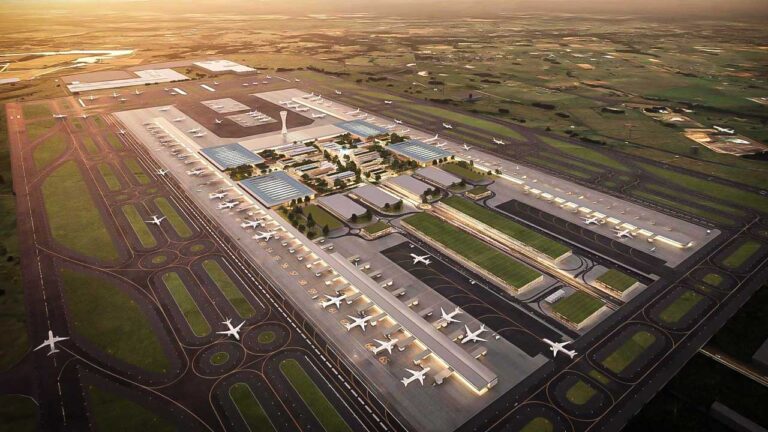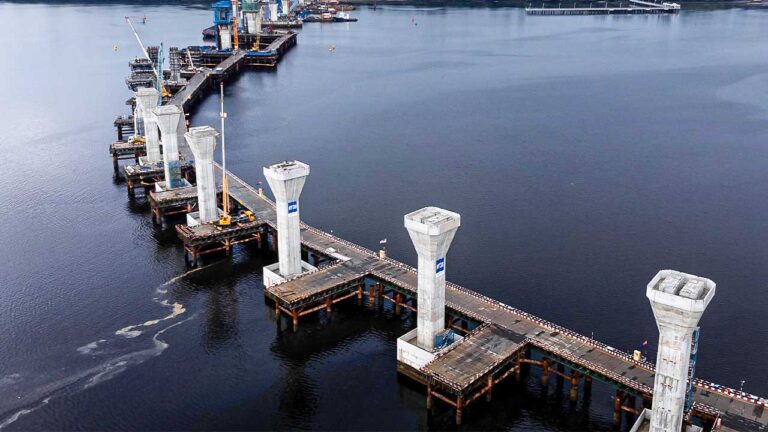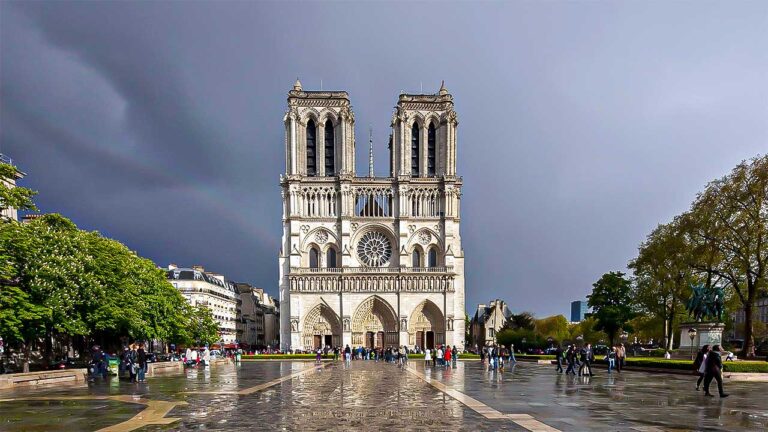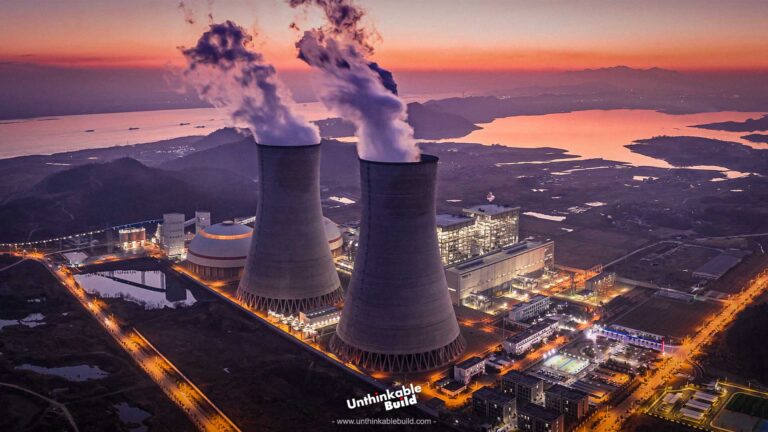Plan to Save the Empty One Times Square Building in New York City
Times Square, nestled in Midtown Manhattan, New York City, is a captivating landmark with rich cultural and historical significance. Renowned for its New Year’s Eve celebrations since 1907, it symbolizes global revelry. Once Long Acre Square, its renaming in 1904 honored The New York Times, anchoring its identity around the Times Tower. Visually stunning with neon lights and towering billboards, Times Square is a testament to human creativity and urban vibrancy.
Below the iconic New Year Eve ball drop and amidst the dazzling array of billboards and vibrant lights, sits a 26-story structure known as One Times Square. Despite its association with the annual New Year celebrations, this building has predominantly remained silent, and its vast floors are largely vacant for decades.
Despite its current state, this building stands as one of the most coveted parcels of land and advertising spaces globally. Now, undergoing an extensive $500 million makeover, the building is poised to evolve into a destination in its own right. However, this transformation poses considerable challenges, potentially making it one of the most demanding construction sites in the US. Amidst chaotic traffic and throngs of pedestrians, maneuverability is severely restricted here. Moreover, the stakes are high, with multimillion-dollar advertising campaigns for renowned brands hanging in the balance. Let’s delve deeper into the process of revitalizing one of New York’s most expensive yet underutilized buildings.
Times Square, nestled in the heart of Midtown Manhattan, New York City, stands as a captivating and iconic landmark steeped in cultural and historical significance. Its fame is woven into the fabric of the city’s identity, with several key elements contributing to its renown.
Initially known as Long Acre Square, Times Square had a checkered past in the 1890s, characterized by its association with illicit activities. However, a transformative moment occurred in 1904 when it was rechristened Times Square in honor of The New York Times, which had recently relocated its headquarters to the area. The Times Tower, serving as the newspaper’s base, became a focal point, anchoring the square’s identity.
In the layout of New York City, Manhattan follows a grid system, with streets and avenues intersecting perpendicularly, creating rectangular plots of land ideal for construction. However, there’s one exception: Broadway. This street cuts diagonally across the area, intersecting with other streets and avenues, resulting in triangular plots of land that can lead to unconventional floor plans. Times Square sits at one of these intersections, its formation directly influenced by Broadway’s path.
Also Read: The Sentinel: U.S. $100 Billion ICBM Project
During its development, the peculiar shape of the plot between 42nd and 47th Street posed challenges for construction, discouraging significant development in the area. It wasn’t until The New York Times saw potential in the emerging district and sought to relocate its headquarters from lower Manhattan.
Within a few years, Times Tower was completed, and in 1905, The New York Times moved in, prompting the official renaming of the area to Times Square. At that time, the 26-story tower stood as the city’s second tallest building, symbolizing the transformation of the neighborhood.
Over time, the Times Tower has witnessed numerous changes in its occupants. Presently, its once striking exterior has become largely obscured by billboards and advertising spaces, reflecting the pervasive influence of corporate America. Despite occupying one of the most photographed locations globally, the actual building remains largely unseen by the public. President of Jamestown Properties Michael Phillips serves as the current owners of the building.
The building at One Times Square holds the distinction of being one of the most valuable advertising spaces in the United States. Aside from the Walgreens occupying the ground floor, much of the building has remained vacant since the 1970s. The unusual floor plan contributes to this vacancy, but the primary reason is the abundance of signage covering most of the windows.
Presently, this concealed edifice is undergoing a revitalization process to emerge as a multifaceted tourist destination. In May 2022, the developer, Jamestown commenced the renovation of One Times Square with a budget of $500 million. To fund the project, Jamestown secured a $425 million mortgage from JPMorgan Chase, alongside a building loan of $88.7 million and a project loan of $39.8 million.
This renovation initiative will introduce a viewing deck and reimagine its interior as an interactive exhibition space, seamlessly intertwining museum elements with contemporary digital experiences like virtual and augmented reality displays.
Critical to the success of this endeavor are Kennebec Valley Detailers and Orange County Ironworks, who have been diligently collaborating since 2020 to seamlessly integrate new steel components with the building’s historic framework. Throughout this intricate process, they’ve meticulously preserved the existing billboards and the iconic six-ton crystal ball, ensuring their continued functionality. This ambitious undertaking garnered recognition at the 2023 SDS2 Solid Steel Awards, underscoring its exceptional fusion of historical preservation and cutting-edge innovation.
The renovation of One Times Square posed distinctive challenges for the teams from Kennebec Valley and Orange County, necessitating meticulous planning and adaptability. With approximately 80% of the original steel structure dating back to 1903 still in place, the teams were tasked with harmoniously integrating new elements while honoring the integrity of the historic components.
Michael Phillips, the President of Jamestown, emphasizes that “Times Square has long been hailed as the crossroads of the world, with One Times Square positioned at its epicenter. The forthcoming phase for this building will further enrich its storied history, establishing a fresh focal point in the heart of Times Square for generations to come. With an emphasis on delivering immersive experiences enriched by technology, this endeavor epitomizes the future of real estate, seamlessly blending the physical and virtual realms. Through innovative employment of Augmented Reality technology and imaginative storytelling, we are redefining the way spaces are encountered, elevating the potential for dynamic engagement.”
Expected to open in 2025, the revamped building will encompass ground-floor retail space accommodating a new tenant, 12 floors designated for office space leased by Jamestown, and six floors dedicated to a museum showcasing the history of the building and Times Square. These museum floors will offer immersive augmented and virtual reality experiences spanning a total of 12 floors.
A notable addition to the structure is the wraparound observatory, accessible via a pair of glass elevators affixed to the eastern side of the tower. This observatory promises tourists an unparalleled panorama of the bustling crossroads below.
The cantilevered walkway will be enclosed by a glass railing and framed by LED displays. It offer views from above the city, this platform will be situated much lower, providing an immersive experience amidst the bustling surroundings.
Also Read: California’s Toxic Salton Sea is a Treasure Trove of Lithium
To seamlessly integrate with the building’s aesthetic, the existing Times Square-42 Street subway entrance on the Broadway pedestrian plaza will harmonize with dark metal elements and feature new signage directing visitors to the observatory’s main entrance located at the southern corner. Throughout its history, the facade of the Times Tower has evolved in tandem with the prevailing architectural styles of its era, and the forthcoming update will continue this tradition.
In the 1960s, the original facade underwent a significant transformation as the steel frame was cloaked in marble and concrete paneling. However, the passage of time saw this facade obscured by a profusion of advertisements. In recent years, the facade underwent yet another overhaul, with plans to replace it with sleek, modern glass panels ensconced within black steel framing. While the advertising boards on the northern facade remained untouched, those on the remaining three facades were removed. The outdated marble facade from the 1960s was slated for replacement with a sleek glass curtain wall.
To facilitate this process, workers temporarily relocated the multimillion-dollar billboards onto a new steel frame, unveiling the steel framework and curtain wall that had remained concealed for decades. This relocation created the necessary space for the implementation of the new alterations.
The triumphant transformation of One Times Square underscores the significance of relationships and service in intricate construction endeavors, highlighting the pivotal role of effective collaboration and transparent communication. Culminating in a topping-off ceremony in December 2023, perfectly timed for the renowned New Year celebrations, the project establishes a benchmark for forthcoming renovations.
The revitalization of an iconic building situated amidst one of the world’s most bustling locales serves as a remarkable demonstration of how the fusion of technology and teamwork can preserve and enhance architectural landmarks for generations to come.

